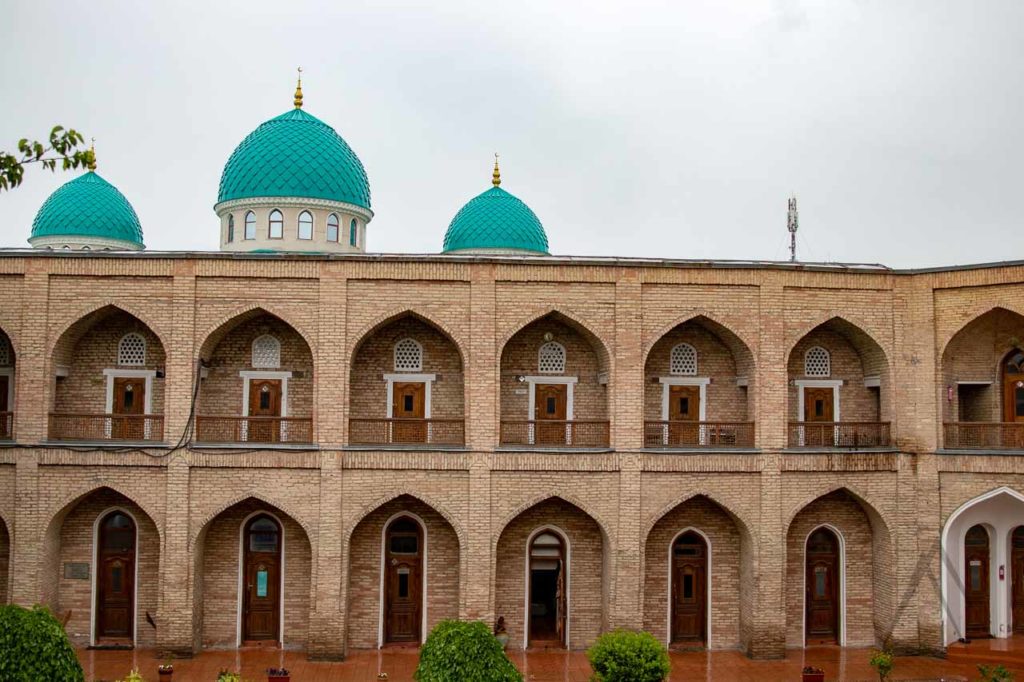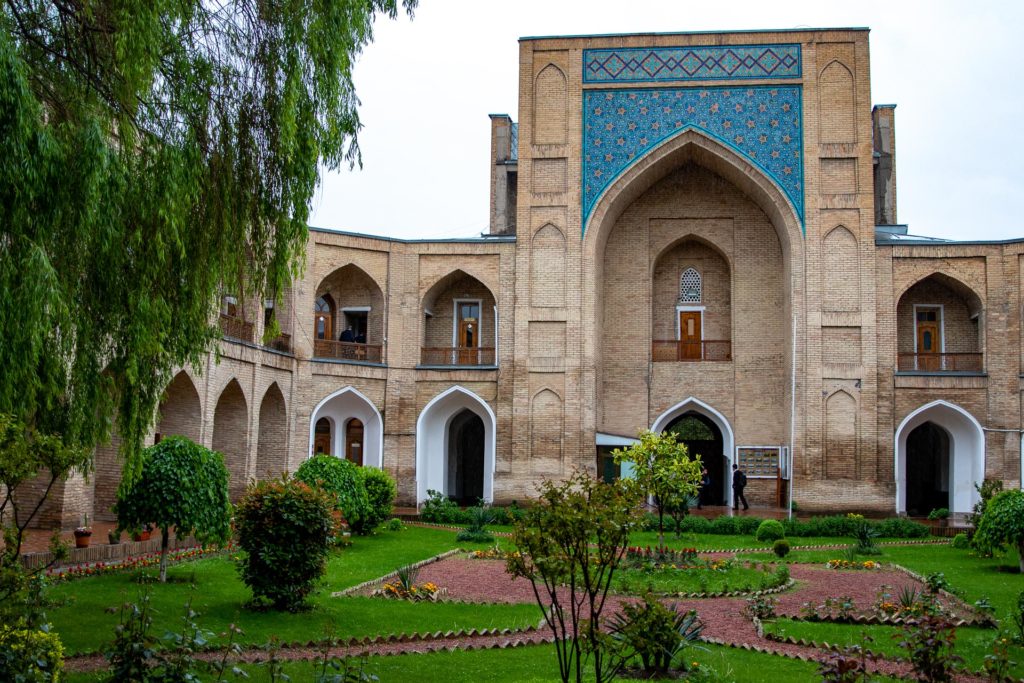Kukeldash Madrasah
Kukeldash Madrasah
Kukeldash Madrasa has a special place among Tashkent madrasas, that are institutions of Islamic study and religious law and is dating back to 16th century and more precisely to the year 1570. It is an amazing example of oriental architecture as a part of the Chorsu architectural ensemble, which is located in the Tashkent Old City just next to the Chorsu bazaar and can be easily visited together with the bazar. Built-in the Middle Ages, the madrasah stands on the site of the old Tashkent city center (Registan) and the Kesh city gates that were part of the fortifications that once surrounded the city.


Kukeldash Madrasah is one of the most important Uzbek educational institutions, where to this day, boys study religious sciences, philosophy, mathematics and astronomy. It is believed that the Hokim Dervish Khan was the initiator of building this madrasah. He was a vizier of the Tashkent Khans dynasty of Sheibanids with a nickname “Kukeldash” meaning”milk brother”in Uzbek, since he was the younger brother of one of the Khans of the dynasty.
The construction of the Kukeldash Madrasah represents the style of traditional architecture with the characteristic of all madrasahs of the sixteenth century. It was built of baked bricks (hay and clay) and decorated with colored majolica, typical for this region and consists of two floors with a courtyard.
The large madrassa territory is mostly made up of the rooms (hujras), where the students lived and in the corners or the madrasa, there are minaret towers combined with a darshana (class room) and of course a mosque. Facade opens an elegant entrance portal with the height of almost 20 meters (peshtak), two-floor balconies with corner towers – guldasta. The portal with the impressive about 20 m height, has both majolica and glazed bricks which have elements of the original tile decor from the 16th century.
Like almost any historical site in Central Asia, the building also has several legends. One of them says that the madrasah served as a place of execution for unfaithful wives, who were thrown in sacks from the highest portal for the edification of local residents. Another legend tells of a sacred pistachio tree that a grew on one of the domes of the madrasah.
Even though Tashkent Kukeldash madrasah (not to be mixed with the same named madrasa in Bukhara) Just recently returned to its original teaching purpose as a spiritual educational institution for local Muslims, it has been utilized for various purposes during different periods. In the 18th century it was used as a caravanserai for merchants and in the 19th century it was used as a place to shoot with cannons at the protesters demonstrating against the khans. Mainly it has though served as a meeting place for local Muslims. At the end of the 19th century, even the great Uzbek poet Zakirjan Furkat lived here for some time. In the 20th century (Soviet Era), the madrasa housed an exhibition with an atheistic movement and a museum of Uzbek musical instruments.
Kukeldash Madrasah has survived for centuries in a region prone to earthquakes, meaning that it has been repeatedly repaired and restored, and therefore the current appearance of the building is quite different from the original, although by size and architectural design this monument of medieval architecture is not inferior to the more famous madrasahs of Bukhara and Samarkand. In the 19th century it survived two earthquakes, in 1868 and 1886; the arch of entrance portal was destroyed and partially restored only in the 1960s.
Other sights in Tashkent
Page updated 2.2.2021